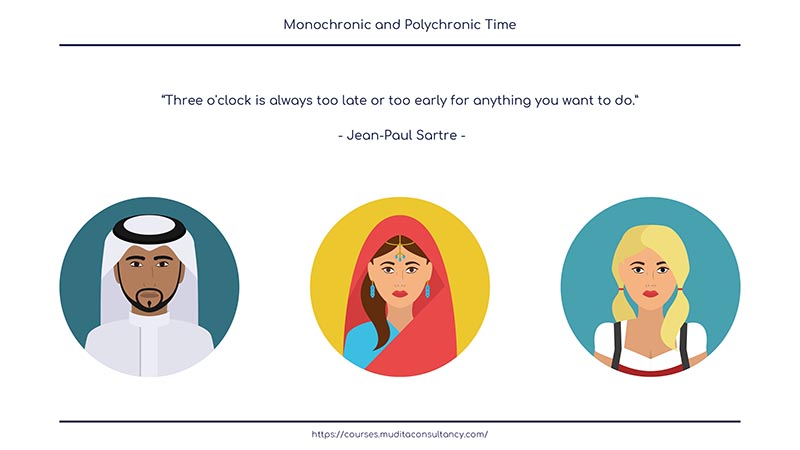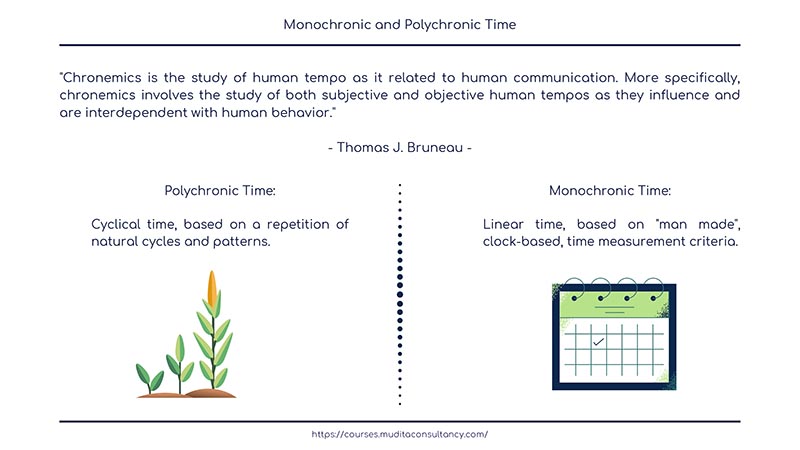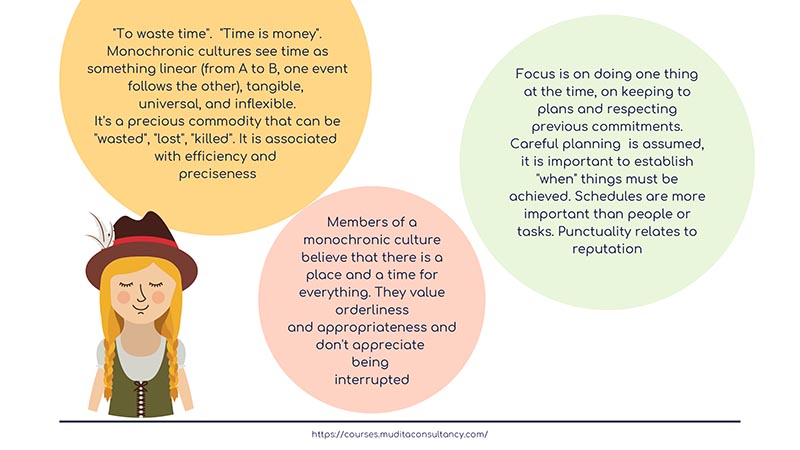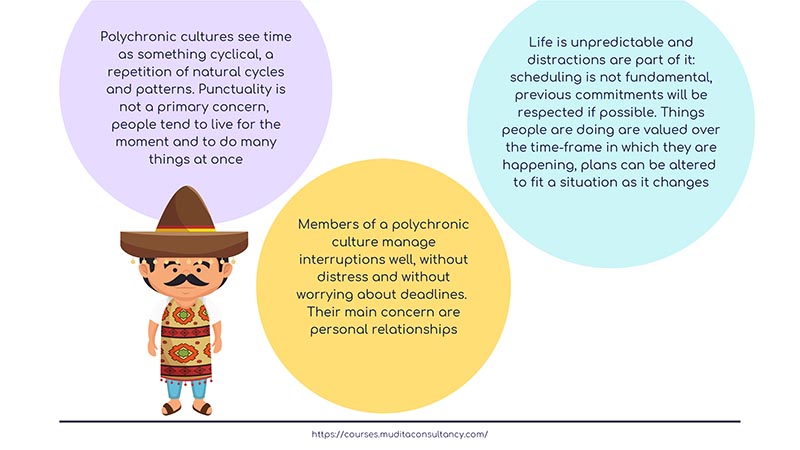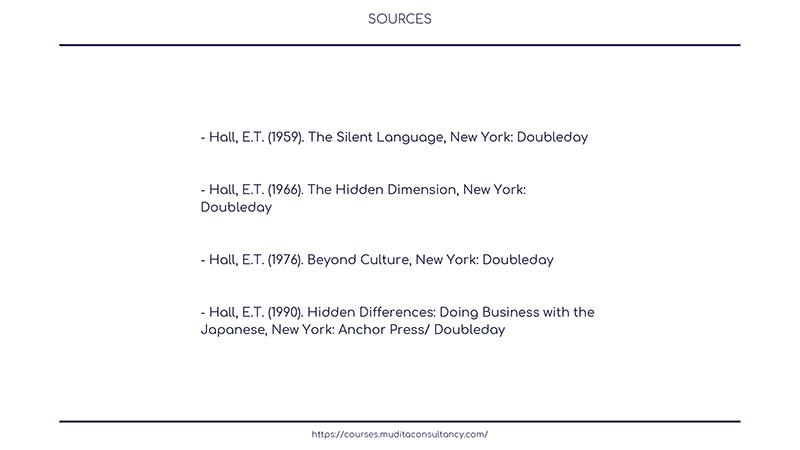Monochronic and Polychronic Time
Three o'clock is always too late or too early for anything you want to do
- Jean-Paul Sartre -
Chronemics is the term that indicates the study of the role and use of time in communication: it includes both individual perceptions about time, and the ways time affects interactions (e.g., punctuality, speed of speech, task prioritization, power dynamics, etc.).
With regard to time management, do all world societies believe that time can be measured, tracked, managed?
The answer is no: in the late 50s, anthropologist Edward T. Hall introduced the concepts of monochronic (cyclical)- and polychronic (linear) time, with polychronism indicating the ability to handle multiple tasks simultaneously, and monochronism a tendency to handle tasks sequentially.
What are the main differences between monochronic and polychronic cultures?
Let’s find out.
In monochronic societies (that include - to varying extents - Scandinavian countries, most English and German speaking countries):
- time is linear and sequential: from task A to task B, one event follows the other;
- time is a precious and tangible commodity that one cannot afford to waste;
- there is a time and a place for everything: monochrons value careful planning;
- schedules are important, timekeeping is associated with efficiency, preciseness, and reputation;
- orderliness and appropriateness are appreciated, interruptions are not welcome;
- focus is on doing one thing at the time, on keeping to plans and on respecting previous commitments;
- meeting deadlines is crucial: it is important to establish "when" things must be achieved.
In polychronic societies (that include - but are not limited to - most Latin-American, Southern European, Asian and African countries, tribal communities around the world):
- polychronic time is cyclical and concurrent: different events take place simultaneously;
- people tend to live for the moment (present and past orientation) and to do several things at once;
- life is unpredictable and distractions are part of it: polychrons manage interruptions well, without worrying about deadlines;
- relationships are more important than task outcomes (e.g., a sudden help request from a co-worker will be prioritized over punctuality to a meeting);
- previous commitments will be respected if possible: plans can be altered to fit a situation as it changes;
- things people are doing are valued over the time-frame in which they are happening.
On a related note, it must be noted that polychronic cultures are usually high-context and collectivist, while monochronic cultures are likely to be low-context and individualistic).
Examples of polychronic- and monochronic cultures are those based in the following culture clusters:
Polychronic cultures
The Sub-Saharan Africa Cluster
Monochronic cultures
How do different perceptions of time affect global organizations? What challenges are likely to arise when implementation and delivery of a project involve different cultural groups?
To find out more about the cultural perception of time, please consider subscribing to the course “Workplace conflict: time management across different cultures”.
SOURCES:
Hall’s Cultural Dimensions (Polychronic- vs monochronic cultures, high- vs low-context cultures)
- Hall E.T. (1959). “The Silent Language”. New York: Doubleday
- Hall, E.T. (1966). “The Hidden Dimension”. New York, NY: Doubleday
- Hall, E. T. (1976). "Beyond culture". New York, NY: Doubleday
- Hall Edward T. (1983). “The dance of life : the other dimension of time”. New York, NY: Doubleday
Hofstede’s Cultural Dimensions (Individualistic vs collectivist cultures)
- Hofstede, G. H. (1997). “Cultures and Organizations: Software of the Mind” (second ed.). New York: McGraw-Hill
Culture Clusters
- House, R. J., Hanges, P. J., Javidan, M., Dorfman, P. W., & Gupta, V. (2004). "Culture, leadership, and organizations: The GLOBE study of 62 societies". CA: Thousand Oaks
Disclosure: This post contains affiliate links. If you decided to buy any of the products listed here, I would earn a small commission (at no additional cost to you).
***
